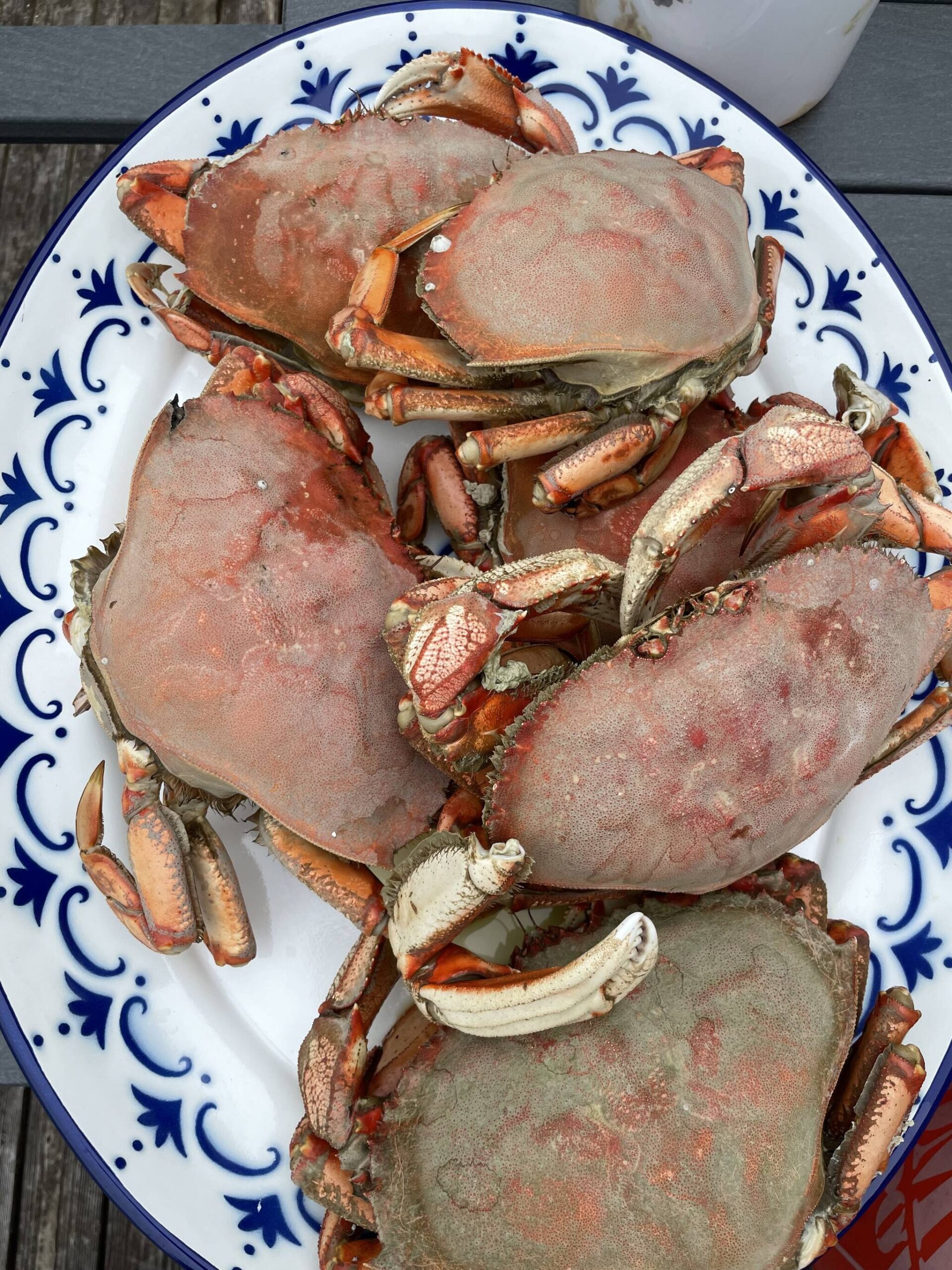While crabbing on Whidbey Island in the summer can feel akin to a game of musical chairs, winter crabbing is more like a game of hide and seek: easier to find a spot, but not without its risks.
Most crabbers in the Pacific Northwest take to the water in hopes of scoring their daily limit of tasty Dungeness crabs. In Puget Sound, the daily limit is five adult male Dungeness crabs that are at least 6 and a quarter inches across the two widest parts of the shell, known as the carapace. The prized crustacean is characterized by its reddish-brown or purple shell, which turns bright red when cooked, its preference for shallow, sandy or muddy seabeds, and its slightly sweet taste.
Winter crabbing in the waters around Whidbey Island is open every day from Oct. 31 to Dec. 31. This is an expansion from the summer season when boaters can only set their pots from Thursday through Monday. The summer season accounts for more than 90% of the recreational crab fishery, said Ralph Downes, an officer with the state Department of Fish and Wildlife.
The state limits the days crabbers can fish in the summer in order to slow the catch of crabs, he added. The state’s target of about a 50-day-long season coincides with the unofficial end of summer at the beginning of September.
Winter crabs often have a reputation for being a better meal than their summer counterparts.
“The winter crabs can be bigger and far meatier, for sure,” Downes said.
The state opens the summer fishery when the rate of hard-shell crabs — those at full maturity and eligible to be kept — reaches 80%. A crab that is considered “soft” simply means its flesh has not grown large enough to fill out its shell. When a crabber presses on its shell to check for maturity, the shell gives slightly. A mature crab that has filled out its shell won’t give when pressed.
“The harder they are, the more they are filled with that tasty meat we like,” Downes explained.
With fewer recreational crabbers in the winter, more crabs have time to mature and fill out their shells, meaning crabbers have a better chance of finding a good candidate for a tasty crab Louie. However, recreational crabbers must compete with tribal and commercial fishermen in the winter — meaning a set pot isn’t a guaranteed dinner.
“Thus, while there are crabs to be had for someone wanting to drop a pot in November for a tasty catch, there aren’t as many to crawl in as there were in the beginning of July,” he said.
Although checking the weather before heading out on the water is essential year-round, it is especially important in the winter, as conditions can change quickly. After checking the forecast, boaters should also listen to channel 16 on a VHF marine radio for weather alerts and other important information while on the water. The biggest change from summer to winter crabbing gear is clothing-based — the actual crab pot equipment requirements don’t change. All pots should have a red-and-white buoy, plenty of weighted line, and rot cords that will dissolve in case a pot is lost with the creatures still inside.
Crabbers should check state rules and regulations on wdfw.wa.gov before heading out any time of year; the waters around Whidbey vary from Marine Area 8-1 and 8-2 on the North End to 6 and 9 on the South End.
After successfully catching a few crabs, Downes stressed the importance of recording it on the required catch card. Crabbers get a new catch card for the winter season and can purchase them at any license vendor, similar to obtaining a summer catch card. Failure to carry and maintain a catch card on the water can result in an $80 fine, and failure to return the catch card by the end of the season will result in a $10 fine. The fine is added to the next time a crabber purchases a new catch card. Instructions for how to report a season’s catch can be found on the WDFW website and on the catch card itself.
The best way to prepare Dungeness crab is to keep it simple — it’s satisfying on its own or with a bit of melted butter.
However, those seeking a new dish with plenty of crab meat might enjoy making crab cakes on a bed of mixed greens. This family recipe uses fresh herbs instead of seasoning mixes and is always a crowd-pleaser. Make a couple of batches ahead of time and keep them in the freezer.
Herbed Crab Cakes and Green Goddess Sauce
1 lb lump Dungeness crab meat
1 sleeve Saltine crackers, crushed (about 1 cup)
¼ cup, mayonaise
2 large eggs
⅓ cup parsley, chopped (curly or Italian)
⅓ cup cilantro, chopped
1 lemon, squeezed, zest added
1 tsp salt
1 tsp black pepper
Beat eggs. Add mayonaise, salt, pepper, and lemon. Add crackers and herbs, mix until combined. Add crab meat and fold gently until incorporated. Form into crab cakes about 2 inches across. If mixture is too dry, add a spoonful of mayonnaise until mixture is easier to form into cakes. Put cakes onto a baking sheet lined with parchment paper and put in freezer until firm. For best results, spray with olive oil and put in an airfryer until golden brown and crispy – about 10 minutes on 400 degrees. Cakes can also be fried in a skillet on the stove. Serve on bed of mixed greens with Green Goddess Dressing.
Green Goddess Sauce
1 handful, parsley (curly or Italian)
1 handful, cilantro
1 pinch, chives (green onion ok)
½ cup, Greek yogurt (sour cream ok)
1 pinch, salt
1 pinch, black pepper
1 half, lemon
1 clove, garlic
Water, optional
Add all ingredients to a food processor and pulse. Add water a tablespoon a time until desired consistency achieved.



